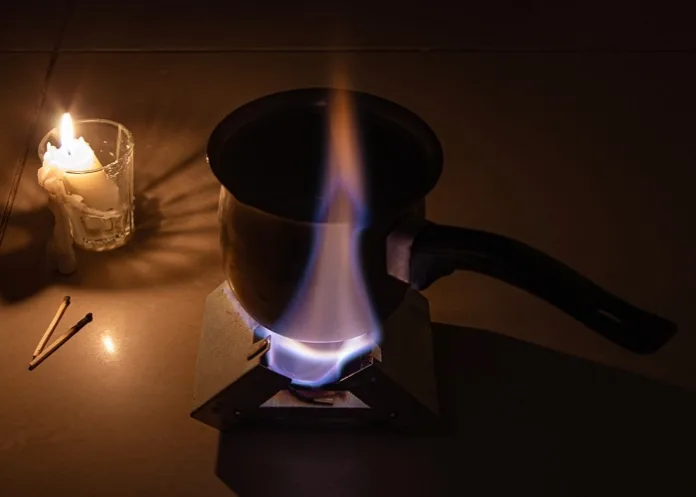Millions of people worldwide – including in South Africa – use natural gas or propane-burning cooktops and ovens, but now researchers have found that cooking with gas stoves can raise indoor levels of the carcinogen benzene above those found in second-hand smoke.
The Stanford University-led analysis found that a chemical linked to a higher risk of leukaemia and other blood cell cancers creeps into homes whenever these stoves are lit: that a single stove burner on high or a gas oven set to 350 degrees Fahrenheit (about 175 Celsius) can increase rates of benzene to much higher that those in second-hand tobacco smoke.
Benzene also drifts throughout a home and lingers for hours in home air, according to the paper published in Environmental Science & Technology.
“Benzene forms in flames and other high-temperature environments, such as the flares found in oil fields and refineries. We now know that benzene also forms in the flames of gas stoves in our homes,” said study senior author Rob Jackson at the Stanford Doerr School of Sustainability. “Good ventilation helps reduce pollutant concentrations, but we found that exhaust fans were often ineffective at eliminating benzene exposure.”
Overall, the researchers found that indoor concentrations of benzene formed in the flames of gas stoves can migrate into other rooms far from the kitchen, and that concentrations measured in bedrooms can exceed national and international health benchmarks.
They also found residential stove hoods are not always effective at reducing concentrations of benzene and other pollutants, even when these vent outdoors.
The paper is the first to analyse benzene emissions when a stove or oven is in use. Previous studies focused on leaks from stoves when they are off, and did not directly measure resulting benzene concentrations.
The researchers found gas and propane burners and ovens emitted 10 to 50 times more benzene than electric stoves. Induction cooktops emitted no detectable benzene whatsoever.
The rates of benzene emitted during combustion were hundreds of times higher than benzene emission rates identified in other recent studies from unburned gas leaking into homes.
The scientists also tested whether foods being cooked emit benzene, but found zero benzene emissions from pan-frying salmon or bacon. All benzene emissions they measured came from the fuel used, rather than any food cooked.
A previous Stanford-led study showed that gas-burning stoves inside US homes leak methane, with a climate impact comparable to the carbon dioxide emissions from about 500 000 petrol-powered cars. They also expose users to pollutants, such as nitrogen dioxide, which can trigger respiratory diseases.
A 2013 meta-analysis concluded that children who live in homes with gas stoves had a 42% greater risk of asthma than children living in homes without them, while a 2022 analysis calculated that 12.7% of childhood asthma in America is attributable to gas stoves.
Study details
Gas and Propane Combustion from Stoves Emits Benzene and Increases Indoor Air Pollution
Yannai Kashtan, Metta Nicholson, Colin Finnegan, Zutao Ouyang, Eric Lebel, Drew Michanowicz, Seth Shonkoff, Robert Jackson.
Published in Environmental Science & Technology on 15 June 2023
Abstract
Exposure pathways to the carcinogen benzene are well-established from tobacco smoke, oil and gas development, refining, gasoline pumping, and gasoline and diesel combustion. Combustion has also been linked to the formation of nitrogen dioxide, carbon monoxide, and formaldehyde indoors from gas stoves. To our knowledge, however, no research has quantified the formation of benzene indoors from gas combustion by stoves. Across 87 homes in California and Colorado, natural gas and propane combustion emitted detectable and repeatable levels of benzene that in some homes raised indoor benzene concentrations above well-established health benchmarks. Mean benzene emissions from gas and propane burners on high and ovens set to 350 °F ranged from 2.8 to 6.5 μg min–1, 10 to 25 times higher than emissions from electric coil and radiant alternatives; neither induction stoves nor the food being cooked emitted detectable benzene. Benzene produced by gas and propane stoves also migrated throughout homes, in some cases elevating bedroom benzene concentrations above chronic health benchmarks for hours after the stove was turned off. Combustion of gas and propane from stoves may be a substantial benzene exposure pathway and can reduce indoor air quality.
See more from MedicalBrief archives:
Study showing gas stove cooking linked to childhood asthma stirs debate
About 2.5 million deaths in 2016 linked to household air pollution
High asthma risk for sons of fathers exposed to second-hand smoke – Australia study

